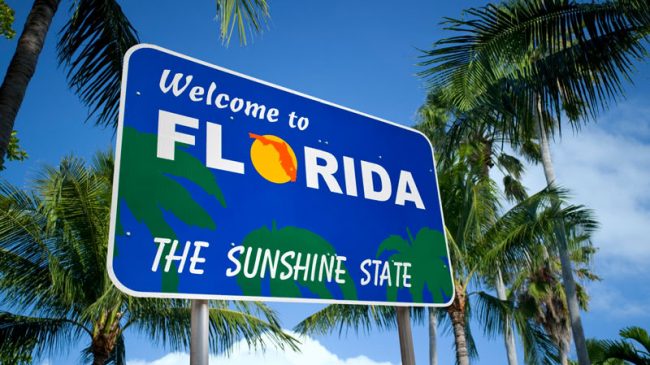On September 22, the Center for Biological Diversity announced it settled a lawsuit against the U.S. Fish and Wildlife Service that requires the agency to decide by June 2016 whether to list the Ichetucknee siltsnail in Florida under the Endangered Species Act. While virtually nobody has heard of this hard-to-pronounce and obscure species that is not much bigger than a grain of sand, this tiny snail is a hint of what is coming across huge portions of the South, Midwest, East, and scattered parts of the West. If listed, the snail will in all likelihood be used to regulate water quality and quantity across the entire watershed for its limited habitat.
The Ichetucknee siltsnail came to be considered for listing under the Endangered Species Act due to a 2011 lawsuit settlement between the U.S. Fish and Wildlife Service and two environmental pressure groups under which the Service is obligated to consider for listing 757 species by 2018, and make final listing decisions on 251 species. One of these lawsuit settlement species is the Ichetucknee siltsnail, but the Center was not happy with the Fish and Wildlife Service’s pace of evaluation so it sued to try to speed up the agency. Which resulted in the settlement and accelerated calendar.
The bigger picture is that most of the 757 lawsuit settlement species are freshwater aquatic species, including 374 that are in primarily in the Southeast, although some are widely distributed across the Midwest and Eastern U.S. (as I wrote about in a previous post regarding several freshwater mussels that caused a severe water draw-down of a dam-controlled lake in northern Indiana, which resulted in a number of people losing their jobs and local businesses losing income). For a sense of the geographic extent of these 374 freshwater species, there is a map available (here) of the watersheds that contain them. There are also scores of freshwater aquatic lawsuit settlement species scattered throughout the West, especially around water sources in lower rainfall regions.
Watersheds are the key to understanding the possible regulatory impacts of these freshwater aquatic species because potentially anything that affects water quantity and quality within a watershed containing an endangered species could come under regulatory scrutiny. And because watersheds encompass enormous areas, this could result in significant impacts on land uses far away from where endangered species are located. Take the example of the Ichetucknee siltsnail.
The Ichetucknee siltsnail lives in Coffee Spring, which is about ten square yards in extent and is one of seven closely clustered springs that create the Ichetucknee River. But the watershed for the springs is 400 square miles, or 256,000 acres. The watershed is located in northern Florida and encompasses about two-thirds of the southern portion of Columbia County (and all of Lake City, which is the county seat), and a little bit of three other counties, Baker, Suwannee, and Union (a high quality map of the watershed is available here).
A wide range of human activities that occur within this 256,000-acre watershed could well be in the crosshairs of the Center for Biological Diversity and like-minded groups if the Ichetucknee siltsnail is listed under the Endangered Species Act. According to the Center for Biological Diversity, the snail “is threatened by upstream pollution and water withdrawal,” and “the springs that feed it are threatened by diminishing outputs brought on by drought, groundwater pumping and nitrate pollution. This harms the siltsnail, which is extremely limited in range.” When the Center filed its 2012 notice of intent to sue it stated:
“Florida’s freshwater springs system is threatened from various sources, such as landscaping, development, urban sprawl, water consumption, agriculture and livestock, and human recreational activities. Florida is renowned for its diverse karst biota, but these threats, particularly from human activities, could severely harm the populations of the aforementioned species.”
And according to Jaclyn Lopez, an attorney with the Center for Biological Diversity:
“The fence [surrounding Coffee Spring] can’t stop the ever-increasing loads of nitrates that wash from pastures, cropland and suburban lawns into the aquifer that feeds the region’s hundreds of world-famous freshwater springs. Nor can it slow the ever-increasing withdrawals from the aquifer by the region’s swelling population, an unsustainable draw-down that scientists say is opening the door to increased saltwater intrusion from ancient tables of seawater.”
The seven springs that create the Ichetucknee River are within Ichetucknee Springs State Park, a popular recreational site where people like to go tubing, canoeing and swimming, especially on hot summer days. But people enjoying themselves makes the Center for Biological Diversity unhappy. In its June 2014 lawsuit the Center stated:
“The snail is in danger because of threats to its limited habitat. The Ichetucknee River, which is connected to the snail’s pool, is used heavily for recreation – in particular, for tubing, diving, and canoeing. The pollution and disruption resulting from these activities threaten the Ichetucknee siltsnail’s small habitat.”
The Center for Biological Diversity has made a name for itself by aggressively going after human activities it deems harmful to endangered species. As more of the 757 lawsuit settlement species are listed across the country, there will be increasing conflicts over ordinary and legal use of resources, recreation, water use and withdrawal, as well as use of pesticides, insecticides, herbicides and fertilizer. It seems odd that such a small species as the Ichetucknee siltsnail could have such far-reaching impacts, but this is a big part of the new reality of the coming wave of species that are being listed under the Endangered Species Act.
